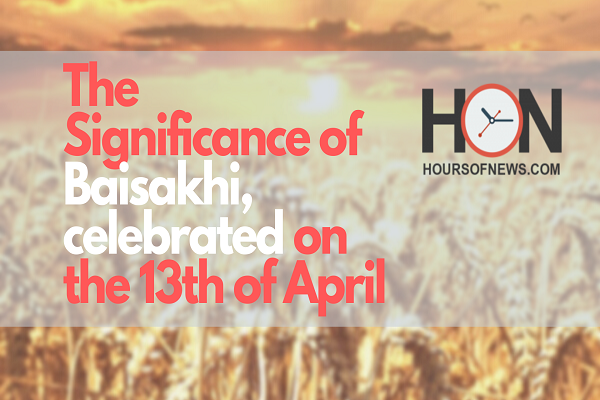Every year the Sikh community gears up on the 13th of April, to commemorate and celebrate the formation of the Khalsa Panth by the 10th Sikh Guru, Guru Gobind Singh in the year 1699 to fight against the oppression that the Sikhs were subjected to. The term Khalsa means free or sovereign. The foundation of the sect was to state that the almighty is the most superior and no ritual or superstition is above the almighty. It emphasizes the belief in one God who is both the creator and the destroyer.
This is also known as the harvest festival, a day when the farmers thank the almighty and harvest the “rabi”crop.
The historical significance dates back to the days of the Mughal Emperor Aurangzeb and his tyranny. The ninth Guru of the Sikhs, Guru TeghBahadur ji was strong advocate of the Hindus and supported their rights and was very vocal in his support. Aurangzeb saw him as a threat to his rule and to the Mughals so he ordered the beheading of Guru Tegh Bahadur ji.

Although this came as a big blow to the Sikhs, his son Guru Gobind Singh the 10th Sikh Guru continued the tradition of his father by supporting the Hindus and not cowing down to the Mughals. He too was seen as a threat by the Mughals.
In 1699 on the day of Baisakhi thousands of devotees came to Anandpur Sahib to seek the blessings of Guru Gobind Singh ji and he took this opportunity to instill courage and faith in his followers. He prepared Amrit and selected 5 volunteers whom he baptized. He named them Panj Pyarey which meant the 5 beloved ones. The names of these 5 were: Sahib Singh, Dharam Singh, Daya Singh, Mohkam Singh and Himmat Singh.Guru Gobind Singh with the formation of the Khalsa Panth re instilled faith and courage in the Sikhs which had been considerably shaken by the Mughals and gave them the much needed fillip to lead a life of dignity and respect.


